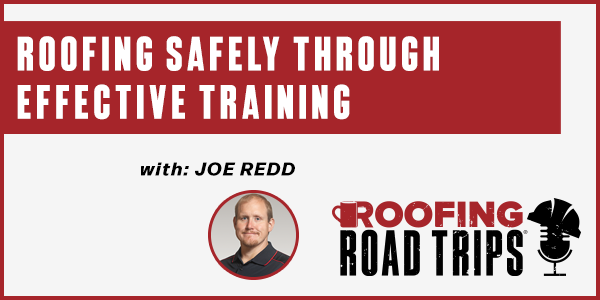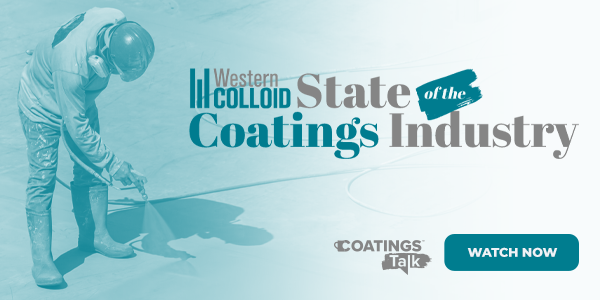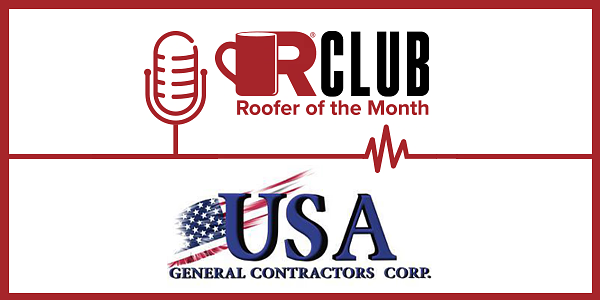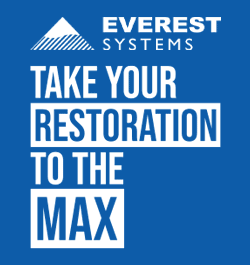Joe Redd - Roofing Safely Through Effective Training - PODCAST TRANSCRIPT
October 3, 2024 at 1:00 p.m.Editor's note: The following is the transcript of a live interview with Joe Redd of The Durable Slate Company. You can read the interview below or listen to the podcast.
Intro: Welcome to Roofing Road Trips, the podcast that takes you on a thrilling journey across the world of roofing. From fascinating interviews with roofing experts to on-the-road adventures, we'll uncover the stories, innovations and challenges that shape the rooftops over our heads. So fasten your seatbelts and join us as we embark on this exciting Roofing Road Trip.
Hello, everyone. My name is Megan Ellsworth here at rooferscoffeeshop.com. And you are listening to another Roofing Road Trip. I'm so excited. I have Joe Redd here from Durable Slate, and we're going to be talking about roof safety and effective training. So Joe, hello. How are you?
Joe Redd: Hey, it's great to be here. Thank you very much. Doing great.
Megan Ellsworth: Absolutely. Glad to hear it. I'll just have you start us out by telling us a little bit about you and what you do at The Durable Slate Company.
Joe Redd: Sure. I've been with the Durable Slate Company for 20 years. And the last 10 of it, I've been the safety director. Yeah, I started there in 2004. So I've done IT, I've done HR things. And 10 years ago, I moved into safety and never looked back.
Megan Ellsworth: Cool. Very cool. It's a really important role.
Joe Redd: It is.
Megan Ellsworth: Obviously.
Joe Redd: Yeah. Roofing is one of the more dangerous industries out there.
Megan Ellsworth: Yes. Yes.
Joe Redd: Protecting the workers-
Megan Ellsworth: What drew you to safety, would you say?
Joe Redd: Well, I would say ... So a lot of safety professionals end up moving sideways into safety. They don't usually come out of high school going, "I want to be a safety pro." A lot of them end up ... They get an injury or something of that nature. But in my case, back when I was an IT guy, I used to sit in my air-conditioned server room doing work on the systems and whatnot and I just thought about all the hard work our roofers were doing out there, sweating like crazy. And so I started going out to job sites in the afternoon, bringing them cold Gatorades and asking them what they do and why they do it the way they do it, why they attach the valleys the way they do, why the overhead laps are the way they are, et cetera. And they explained it. The term I've heard is they're water-diverting engineers. So they explained the-
Megan Ellsworth: I love that.
Joe Redd: ... Thoughts behind it. I found it very fascinating, but I also noticed things that tickled my fancy, like this doesn't seem like they're as safe as they should be at times. So that highlighted my move into becoming a safety trainer for onboarding and things like that, and wanted to make sure everyone was set up for success when they went out. And so when the time came, I was tagged to be the new safety director when somebody else had left. And I feel like I've made a lot of improvements, and helped the company grow from it.
Megan Ellsworth: That's awesome. That's really cool. I love that you just went out and took the initiative to go and get them Gatorade and say hi and learn the process. That's really cool.
Joe Redd: Well, roofing is one of the hardest jobs, physically. It's very demanding. And those people who go out and do it, they're a special breed. You can't thank them enough. It's such a vital part, to protect all the buildings. But they work really hard, and it's important to me that they feel appreciated and taken care of.
Megan Ellsworth: That's awesome.
Joe Redd: I'm a people person.
Megan Ellsworth: I love that. That's beautiful. So what types of training programs does The Durable Slate Company provide?
Joe Redd: Basically, there's four types of trainings that we're going to do. The first one is onboarding training. And that's what got me into safety, is ultimately I realized sometimes that got missed or wasn't as thorough as it was supposed to be. And if you have someone with limited experience going in, that's challenging. You can have people with supposed experience coming in, but they don't actually ... They were never formally trained, and they're totally not competent at certain stuff because it was never gone over with them. So onboarding training is very important.
Our onboarding is about a two-day process. It's a mixture of classroom and hands-on. We have mock roofs. We have the ladders and scaffold parts and things. So we can kind of go over the basics of stuff, how to set a roof jack and they can do that on the mock roof hands-on and stuff. So nobody who comes on board with us misses training anymore. For the last 10 years, zero people have missed onboarding training. And that's very important to me. Set them up for success early.
Then we have the competent person level trainings. This could be like if you're going to have somebody who's going to be the person who builds scaffold to get to the gutters or roof line or whatever, you have to have a competent person level training and that's a couple days or fall protection or something of that nature. Aerial lifts, stuff like that. So there's those competent person level trainings that are more classroom-prescribed, must hit certain points, et cetera.
Then we do monthly safety topics. And that's really important, because where you're doing frequent but small refreshers on all the elements that are in the health and safety program. And most importantly, what are the things the workers are truly seeing in front of them when they're out there?
The more times that they hear about it, the more likely it is to sink in. And at those monthly safety topics, they're relatively informal, so you can get some conversations going and workers who have a lot of experience can share a story of either where it went wrong for them or someone they saw or things like that. You can also have people, if they ask the question, "Well, how would I actually accomplish doing what you're discussing?" They can share how they accomplish it, if you have the more experienced people.
And then the final one is we do a daily job hazard assessment. And this is led by the foreman of the crew, whoever the crew leader is. They're going to look at that job, especially when we do residential work, right? Those types of jobs you do, it might be one day, two, three days is all. And so it becomes really important that the competent person leading the crew looks at that job site, sees what hazards are there and then they make sure any of the newer people on the crew are 100% understanding what they're facing that day. And that could be like, "Oh, they have an animal in this house. Even though they say it doesn't bite, you don't know that it won't." Or it could be, "Hey, we see some bees around here. Anybody here allergic to bees?" If you know that, then you might need to go into depth about where's that EpiPen and all that. If everyone says, "No, I'm not," then great, you just remind them of the basic safety of it, et cetera.
So those are the kinds of oddball things that have to get covered in job hazard assessments. And if we get on the really large-scale jobs, the multi-month jobs, we may ... Because the hazard assessment doesn't change day to day, we might just go ahead and do toolbox talks instead where you ... And I know the NRCA has great resources with a lot of really wonderfully put together toolbox talks. But there are other sources out there as well.
Megan Ellsworth: Yeah. I love that you all do that open forum style, the third one you listed. I think that's so important to have everyone be able to share their experiences, what they've seen in the past and bounce ideas off of one another. I think that's really cool.
Joe Redd: So I've taken the training course to be an OSHA 10 and 30-hour authorized trainer through the OSHA Training Institute. And it is really stressed that when you're doing any kind of training, whenever possible, have people in the training class or in the training group share like that because it usually ... It resonates much deeper, especially with the younger or the less experienced people, when they hear an experienced person talk about it, as opposed to that safety person who's just there to annoy us. Oh, the actual person who's been doing this 20 years and they built their career on it, they're saying it. It resonates deeper.
Megan Ellsworth: Yeah.
Joe Redd: For sure.
Megan Ellsworth: It totally, totally does. So going off of that, how do you accommodate different learning styles within your training programs? Because that can be a huge factor, if someone is actually absorbing that information.
Joe Redd: Sure. So the ANSI standard for adult training says that there's four types of learning. Some people learn best by reading material. Some people learn best by hearing it, like in a lecture form or talked about. Some people will learn it best by seeing it demonstrated, pictures or smaller demos or videos. And then the best possible one, and some people only learn this way, is hands-on, kinesthetic, actual doing-ness of it. So we try to make sure we have a mixture of that.
At the end of the day, whatever you're training your employees, it's only as good as to the extent that they absorbed it and are able to apply it. So anytime you can get hands-on, it's better. But there are workers that ... Obviously we have workers who English is not their first language. We have workers who are illiterate in all languages, and they've been working for 20 years. They have tons of experience, they're extremely valuable, but trying to do anything in writing is really difficult. So there are times, even when a training course was designed to be reading-based, with a written quiz or something, we'll turn it into an oral-based ... I never hesitate to pull up Google Images and search, to pull up pictures to make sure it totally clicks with people that what I'm talking about is what they're imagining.
But one thing I didn't realize when I started doing this but later I learned, there are some people, if they don't read it, they never absorb it. And the NRCA was doing ... We had the slate roofing ProCertification. We had four of our employees go through that process last year, or maybe it was earlier this year, but not too long ago. And so the evaluators were all there. And one of our employees ... I would've never guessed this. One of our employees was like, "Can I please have the instructions in writing?" Because without that, all the explanation and even the seeing pictures weren't enough. He needed to see it in writing. And I actually brought that up. I showed the ANSI standard for that. And they ultimately gave him the written instructions, and he passed with no trouble with that help. So you have to keep in mind all adults are different, and you can't try to jam a one size fits all solution to them. But as long as they can take it and apply it afterwards, that's all that matters.
Megan Ellsworth: That's all that matters.
Joe Redd: Yeah.
Megan Ellsworth: Yeah. All that matters. That's a really good point you mentioned. Some people started working after middle school.
Joe Redd: Yeah. I've met people, 14 years old is when they started their roofing career.
Megan Ellsworth: Yeah. And their writing and reading is just not what other people's are.
Joe Redd: I've met people who can't ... They're dyslexic. So reading is hard, but they can read blueprints like nobody's business. So if you sketch it out or give them a demo, they totally absorb it. They're really intelligent people.
Megan Ellsworth: Absolutely.
Joe Redd: It's not the traditional way we think of it.
Megan Ellsworth: Exactly. It's just not traditional. It's not, like you said, in that box. And I love that you said it's not one size fits all. And I love that you all implement different strategies for people's success and take everyone into account. That just makes everyone feel so welcome and included.
Joe Redd: That's very important.
Megan Ellsworth: And it's so important, and I love that it's important to you all. So what are some of the biggest challenges you face when implementing these training programs? I know you mentioned some people, their first language isn't English. And what are some other ways you address these different challenges?
Joe Redd: Well, so a few challenges. First one that comes to mind is ... Some of these competent person classes, if you want to have a third party do the training, you have to schedule it in advance. But the weatherman is not particularly accurate beyond a couple of days. And in the roofing industry, when the sun shines, you really want to be out there getting your work done. So ideally, you'd want to do training on raining days, but you can't predict them in advance. So we do a lot of self-performed training, where I am ... I'm certified to be a trainer on a variety of topics, like scaffold and fall protection. I got through third-party training the trainers and such.
The other thing you can use in that scenario is computer-based training. It's not usually the most ... On its own, it's not the best way for people to absorb everything, but as long as you augment that with those monthly topics and on-site stuff.
And then the last thing, we've tried to do it with limited success, is either do weekend training or plan to work the weekend when training is in that week, just in case it was sunny and to make up the hours and make sure ... And for the most part, most employees are happy to get more hours. So that ultimately leads to overtime if everything was sunny. And it's not necessarily overtime if it turned out it was rainy that week. So that could be helpful.
Another big challenge is you can try all you want to create trainings that will cover everything people see, but every job site's unique, especially in older buildings which we work on. They weren't cookie cutter. It's not like going down through the neighborhood and there's only three designs out of a thousand homes. We deal with a lot of really unique situations. So one of the things I work hard to do is get to know all of the field workers, make sure they have my phone number and they feel comfortable FaceTiming me or asking me to come visit their site. So I get a lot of phone calls or FaceTimes, where when they're facing something that they're questionable about it.
The other thing is I don't ask them to memorize everything in the trainings, just to have some awareness so they know when to ask those questions. And they can ask their production management or myself. But I'll interrupt meetings with the owners of the company or my boss or whatnot if I see a field person is needing some assistance, because they're more important than anybody in management, quite frankly. And that's part of prioritizing. The field workers are the engine that make the money for the company. So you've got to take care of them in every way, shape or form.
And then when it comes to the language barrier, we do have some members of management who are fluently bilingual. And so I will train them how to deliver trainings directly on the monthly topics, so that instead of trying to do a translation, which doubles the time, I train them in advance so they can just deliver it in the native language.
And we have run into a situation where somebody's language was not Spanish, which is the easiest one to get translation. We've had people where it's Hungarian, and we've had people where it was Swedish. So you have to get a little inventive. In one case, we had the nephew of somebody we were onboarding sit with him. We paid him to be there as well to translate for him, because Swedish is just not easy to translate. You got to do what you got to do. There are services out there. But for the most part too, if you search hard enough, you can find bilingual trainers in most of the common languages, like Spanish especially. And the computer-based trainings usually are offered all in Spanish as well.
Megan Ellsworth: Oh, that's awesome. That's great. I love this. I love that your top priority is the field workers, because that truly is the top priority and it shows in everything you all do. So how does investing in all of these training programs impact employee morale and job satisfaction?
Joe Redd: Sure. To be honest, some people find it all a hassle. Not many, but there are some. And in that case, I'm like, "Well, you're paid by the hour. Take the extra time." There are people who have left our company and don't want to work for us because they feel it's a hassle. Not many, but those who did that probably also have quality problems and other problems. So I've never heard of that happening with somebody where anybody was sad about them leaving, to be honest.
But the types of people we aim to have are high-level professionals. We're a very quality-driven company, and we put safety and quality at the top of the platform. Productivity is slightly below that. So if you have to be less productive to be quality and safety-minded, you do that for this one job. It'll pay for itself in the long run, as long as you learn from it and all that.
So it's definitely a package of professionalism. I've had a lot of experienced employees come to us. Sometimes I do the onboarding training, sometimes I don't, just depends on how it falls. But I almost always do the OSHA 10-hour cards in person these days, because I can usually get 10 hours where I have three to 10 people in it. 30 hours is a little more tricky. And we do those computer-based, unfortunately. That's the only way to do it, because they're usually one person at a time. But I've had plenty of people with 10, 20 years' experience in the construction industry, sometimes roofing, sometimes not and they've literally never been trained on any of the topics that we're going over and it floors them.
At the company picnics and whatnot, I've talked to the family members and it makes a lot of the spouses and children and whatnot feel more comfortable that their spouse or parent who's working in a relatively dangerous industry, knowing that we enforce all the things we train as well. So we go around and inspect the job sites. And knowing that it's enforced and knowing that it's required and nobody's going to complain about any slowdowns by doing it right, it makes them a lot more comfortable in what they're doing.
So that's been a big thing. And I know we had one particular individual, he got hurt and he was in the hospital. And when I went to visit him, the first thing his wife says to me is, "Why wasn't he tied off?" So she knew that he was supposed to be tied off. I didn't want to share everything about the investigation to date, but I said, "Look, GPS said he had been there six minutes. It was his first trip up. He hadn't yet put in the anchor." That's what happened. So he ended up recovering and everything, but it was one of those ... It was kind of powerful to have the spouse say, "First question, why wasn't he tied off? I know he has all the equipment and he's supposed to do it. Why didn't he do it?" That's what she was sitting there fretting over while she was waiting to find out how bad an injury he had. And that's the only major injury I've had in 10 years.
Megan Ellsworth: Wow.
Joe Redd: I'll take that. Hopefully have the next 10 without one of those.
Megan Ellsworth: Yeah. Yeah, that's powerful.
Joe Redd: So those are the biggest things I see with the employees' morale and ... They feel like they're taken care of and that they're important.
Megan Ellsworth: Yeah. And especially to have that reaction from a spouse. They feel empowered by knowing the safety process as well, and feeling like they can speak for their spouse and stand up and say when things are wrong or right. That's really powerful, and you're providing that. That's great.
Joe Redd: Yep.
Megan Ellsworth: So can you discuss the impact of effective training on the overall performance of your teams and the quality of the job?
Joe Redd: Sure. Absolutely. So actually, I have a business background, so I crunch numbers. If you're familiar, there are two numbers if you bid bigger jobs that you have to turn in. One is what's called an EMR, or experience modifier rating. It comes from the workers' comp. And in a very simple nutshell, it's those insurance actuaries. They say, "Based on your payroll, we expected X number of dollars in claims, but you actually had Y number of dollars in claims in a four-year span." And they do the quick math on that. And if you have a number bigger than one, it meant you have more claims than you're supposed to and you're going to get a penalty rate. So whatever you were going to pay, you times it by one point whatever it was. And if you're below a one, you'll get a discount. That's part of how that works.
So from 2014 to 2024, all of this safety focus and getting everybody to not only get trained but get applying the training ... That was the biggest part. They were trained before. It was getting them to apply the training. We moved our EMR down 0.46. So from well above a one to well below a one.
Not taking into account base rates, moving around in the states we worked in, about $300,000 in savings was had just by having our EMR drop that much. Also, by being well under a one, we're far more competitive when we bid. You get much above a one, and a lot of contractors don't want to bid with you on bigger projects. So then you're stuck doing all residential, which ... There's nothing wrong with residential, but when that's all you do, it's just not as fun to the workers. They like being on big marquee jobs, church steeples and historic places.
Also, part of making our EMR move that far is we had a lot less injuries and workers are only making us money if they're out in the field doing their job. So anytime they're laid up, even on light duty, yeah, you can accomplish training or they might learn some skills or something, but they really make us the most money on sunny days when they're out there getting work done. And having significantly more uptime, if you will, has probably made us a lot more than that workers' comp savings.
And then the last thing I've noticed, when we ... Because I'm a real champion for going the extra mile to set up the job upfront safe. Especially if you have a super solid scaffold or if you've got a platform up there that they can take the metal break up and do all their metal up top, they work so significantly faster when they have zero concerns over their safety, right? They're not stepping over a bunch of junk. They're not walking by sharp edges, they're not walking on platforms that move.
They're not constantly worried about falling. I've seen it double their speed, literally, double their speed on certain projects. And that's a huge thing. And it also makes them feel a lot better about coming to work.
Megan Ellsworth: Yep. That is huge. And like you said, when you're trying to step over stuff and you're tiptoeing around, you're being extra careful, you're slower, you're obviously not going as fast. That's huge.
Joe Redd: If you've ever been on a boat, it's kind of like having sea legs. People who are on boats, they move around all right, but they move slower. It's a more deliberate slowness that keeps them safe. And that's what happens when you have moving platforms or unstable platforms, even if they're not going to collapse.
Megan Ellsworth: Yep. Absolutely. So are there any specific tools or platforms ... You've touched on this a little bit, that have proven particularly effective in your training?
Joe Redd: The most effective training is when you have a larger group, at least 10 people, especially when you have some diversity in the group where you have some more experienced people or people who knew somebody, maybe it's a parent, aunt, uncle, whatever, that had an issue and so they can relate to what we're talking about. But if you get a larger group, you're more likely to get someone who can relate and that usually drives a better result in the training because you'll get more conversation going between the people in the training.
The other very effective training that isn't even mentioned before when I was answering the questions, is when I visit job sites through audits, we do a lot of impromptu discussion, like, "Oh, in these previous training classes, this came up. Here you are facing it in the real world." And maybe they weren't doing it exactly the way I thought they should or whatever, but we'll discuss it. But I'll also pat them on the back, like, "Hey, look, this is a great job you did. This was hard to imagine probably in the training, but you applied it really well here."
I also work really hard to make sure, in my weekly management safety meetings, if I see anybody who's done good things, to mention them by name. And that is mentioned then in front of the entire company, all breaches. And so when they hear the same name over and over, that person becomes well-known enough that then when they run into other management terminals, like, "Oh yeah, I heard you've been doing a great job out there with your fall protection plans or your scaffold setups or how you handle the power lines," or whatever. And it also can make them seen as a subject matter expert, where people might actually reach out to them to say, "Hey, I heard you did really good with lead planning. Can you help me out with this job?" So they become an expert themselves.
Megan Ellsworth: Cool.
Joe Redd: That usually makes people feel 10 feet tall and bulletproof.
Megan Ellsworth: Yeah. Cool. Yeah, I think you totally touched on that there. It's just empowering people, having those open conversations, sharing experiences. People connecting with people is the most powerful form of training, for sure. So how do you plan to continue evolving, lowering that rate and getting more safety training into The Durable Slate Company?
Joe Redd: So when you look at safety management systems, which are designed to be far more proactive than traditional safety is usually thought of, getting involved the foreman and superintendent, the frontline supervisor-level people into both safety training and safety implementations. We've done some of it, but I'd like to really do more of that.
And there's a particular company, I won't name names, they're not a roofing contractor, but they are a trenching and confined space contractor in central Ohio. And when I went to my OSHA 10 and 30-hour card authorized trainer training ... I'm trying to remember the exact number of the class, I think it's like OSHA 510 or whatever. There was 24 participants, and seven of them were from this particular company. And they weren't professional safety people. They were foreman, superintendent-level people, but safety was so integrated into what they did that they were actually leading safety trainings and they wanted them to be able to at least be the guest star to do parts of the OSHA 30s that they did, et cetera.
And so this one lady, she was the expert at confined space, whenever they had to go down to sewer tunnels and do the air monitoring and stuff. So when we were in the class, she actually went over everything she knew about it. And I was blown away. She's a subject matter expert both on the doing-ness, but she also knows all the rules about it to explain the ...
So ideally, we'd really like to get to that point where it's a lot of people who are effectively being safety pros simultaneous to their job. That's the absolute best way to be as a company. So we really want to do that and be far more proactive and not reactive. I mean, when you're doing it right, OSHA is really not your concern at all. You're way beyond any of theirs. And in 10 years, we haven't had an OSHA violation, knock on wood. We've had plenty of visits. So we've worked to be that, but maybe at some point, maybe being part of the OSHA VPP program is also kind of in our goals.
Megan Ellsworth: Yeah, that's awesome. And I think it's so great because you already are all so proactive, and I love that your goal is just to become more because there's never too much.
Joe Redd: And it's very important to make safety integrated right into the fabric of what everyone's doing and not have it be like there's a separate person or department. We've worked towards that goal, but maybe more formalizing that a bit.
Megan Ellsworth: Yeah. That's awesome.
Joe Redd: Yeah, that's the goal.
Megan Ellsworth: Amazing. Okay. Well, we've come to the last question already. This has flown by. Is there any advice you would give other roofing companies looking to improve their safety training?
Joe Redd: Well, having jumped in the way I did, I can tell you when you first look at safety, it can look very daunting. There's a lot to it. It's like the old adage. How do you eat an elephant? One bite at a time, sort of thing. You just have to take one thing and start, one thing and start.
What I've learned from ... If you're worried about OSHA compliance especially, and when you're still at that level, remember OSHA, other than a few key ... Like aerial lift, forklift type things. Other than a few key things, they do not prescribe specific training for topics. They just say the employer figures out the best way to make it happen. So I can say definitively that what they prefer over all other trainings is that frequent and relevant training. So quick hitter refreshes, et cetera, are really valuable in the world. So if you're having ... Especially those monthly type safety topics, or you break it up into bite-sized chunks. If you do that formally, that's probably the absolute best thing to be doing. It's something that I started doing right away when I took over, and it was very effective, before I started doing all the competent person trainings and stuff, when we got all that caught up. So definitely that.
And documentation is totally your friend. There's an old saying. It's what's the difference between science and screwing around is whether you write down the results. So when you're out there and you're talking about safety things, just document you did it, capture signatures. There's electronic ways to do it, there's paper ways to do it. But don't be afraid. Just because it's, say, a production manager and that's not normally their hat, if they had a safety talk with their people they really should just document that real quick. And that way, if later on down the line you need to prove it happened, you can.
But just do what you got to do. Don't be afraid to start in one little spot, and just keep going at it. There's a lot of resources out there that as you go on ... I know your workers' comp folks generally always have a lot of videos and sample programs and stuff like that if you need to write things up formally. But just get it integrated into your doing-ness, and more frequent is better. It looks good to the OSHAs of the world, and it looks good to the employees, because it's constantly being brought up and not something you talk about one time and then forget it.
Megan Ellsworth: Yeah, absolutely. Repetitive. Repetitive is so important. Well, Joe, thank you so much. This has been so informational. And I'm just beaming with pride for The Durable Slate Company and everything you have done to make your employees feel so safe. So, well done. This has been amazing.
Joe Redd: Thank you. Well, we're doing our best and hopefully all the other roofing contractors can also do this same basic thing. Roofing is definitely ... If you look at the Bureau of Labor statistics, it's one of the most dangerous occupations out there. But it's like a lot of things, it doesn't have to be. There's the old saying, whether you can or you can't ... Whether you say you can or you can't, you're right. So you just have to have a can-do attitude that we can figure out ways to get work done and be safe simultaneously. After 10 years, I've seen it. Our employees can be just as productive while being safe as they were without it, even though sometimes you'll hear the excuse, it's not valid if they've put a little thought and foresight into what they're doing.
Megan Ellsworth: Yeah, yeah. Exactly.
Joe Redd: I really appreciate you having me, and I think the Roofers Coffee Shop is a wonderful podcast and I'm glad that you're out there in the roofing industry trying to share all of the various things that we all need to know about.
Outro: Yay. I'm so glad to have you on. For everyone out there listening, you can go to rooferscoffeeshop.com to learn more. The Durable Slate Company has a directory, so you can see what they're up to. And thank you so much for listening. This has been another amazing Roofing Road Trip, and we will see you on the next one.
If you've enjoyed the ride, don't forget to hit that subscribe button and join us on every roofing adventure. Make sure to visit rooferscoffeeshop.com to learn more. Thanks for tuning in, and we'll catch you on the next Roofing Road Trip.























Comments
Leave a Reply
Have an account? Login to leave a comment!
Sign In